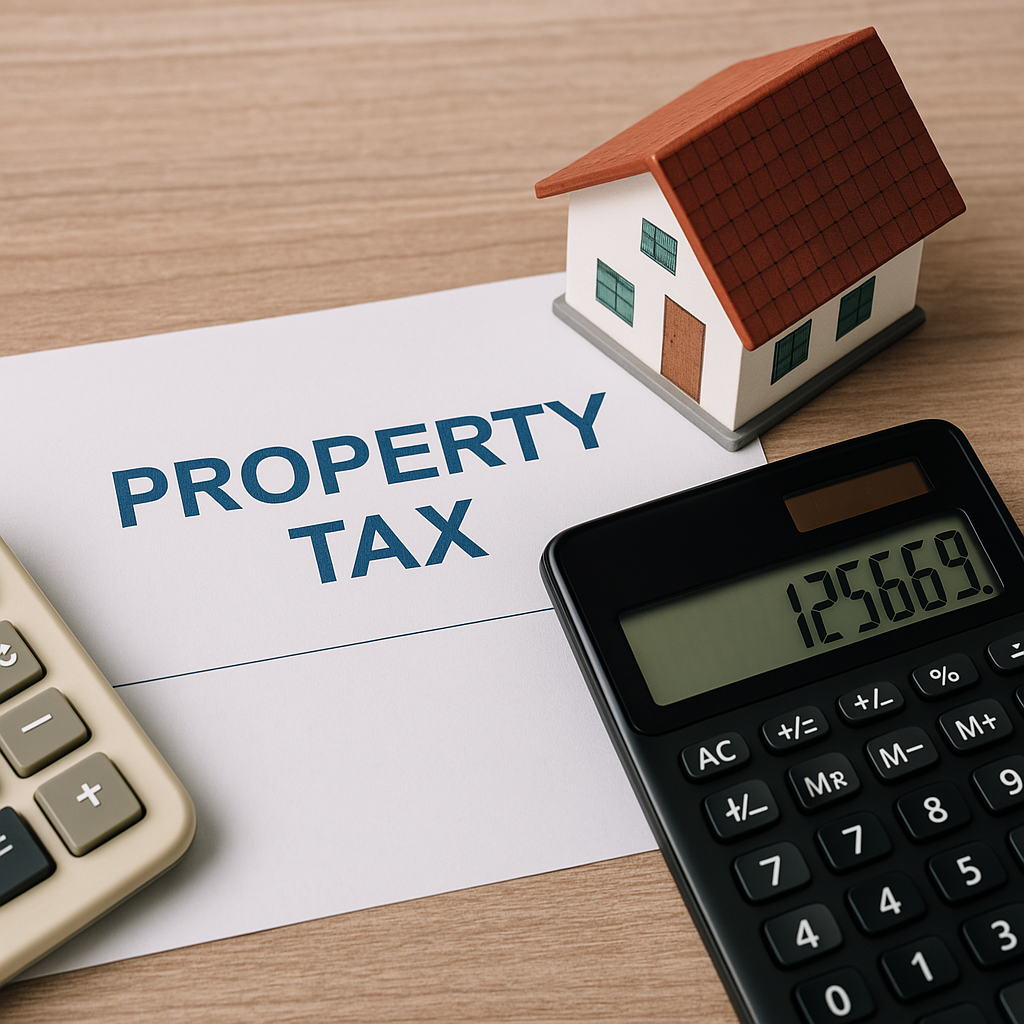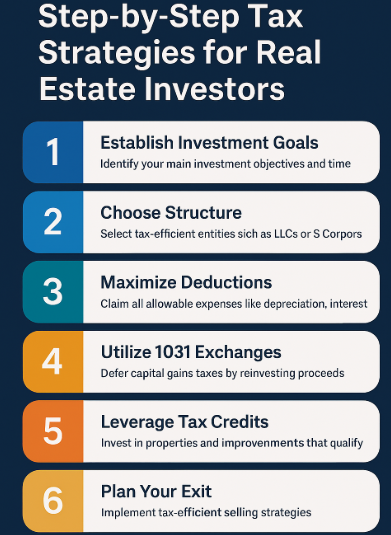
Check out our app!
Explore more features on mobile.
Are Real Estate Taxes the Same as Property Taxes? A Comprehensive Analysis for Investors
Published on 2025/04/10
There is a lot of confusion between the terms “real estate taxes” and “property taxes,” with many investors and homeowners using them interchangeably. However, while these terms may seem similar, understanding the nuances between them is key for making informed real estate decisions. In this comprehensive article, we dive deep into market trends, appraisal methods, financial comparisons, and real-world data – all backed by industry research – to clarify the differences and explain how these taxes impact your investments.

Image: Comparison of Real Estate Taxes and Property Taxes
1. Understanding the Basics: Definitions and Historical Context
Property Taxes are levied on real property, which includes land and any structures attached to it. They are primarily used to fund local services such as schools, police, and municipal infrastructure. The assessed value of your property, determined by local tax authorities using market data and appraisal methods, forms the basis for calculating these taxes.
Real Estate Taxes is a broader term and in many instances is used interchangeably with property taxes. In some cases, however, “real estate taxes” may also refer to other taxes related to real property transactions, such as transfer taxes or special assessments. The confusion arises because both terms derive from the value of real property, but their application can differ depending on context and jurisdiction.
Historically, property taxes have been a primary revenue source for local governments, evolving alongside changes in the market. The methods for calculating these taxes have been refined over decades, incorporating appraisal techniques, standardized ratios, and regional market trends.
2. How Property Taxes Are Assessed
Most jurisdictions determine property taxes by calculating an assessed value for the property and applying a predetermined tax rate. The process generally includes:
- Market Analysis: Local assessors review recent sales data and property characteristics.
- Appraisal Process: Professional appraisers evaluate the condition, size, and location of the property.
- Assessment Ratio: A percentage of the market value used to arrive at the taxable amount.
- Tax Rate Application: Multiplying the taxable value by local tax rates set by city or county governments.
Real-world examples show that in some high-growth regions, the assessed values may lag behind the actual market rate, leading to discrepancies in expected tax bills. As market trends shift – whether through a booming real estate market or a downturn – the tax assessments are adjusted accordingly. This dynamic relationship between market data and tax assessment underlines the importance for investors to remain informed about local appraisal practices.
3. Comparing Real Estate Taxes and Property Taxes: Key Differences
Even though the terms are often used as synonyms, there are subtle differences to consider:
- Scope of Application: “Property taxes” typically refer to the annual taxes paid based on property assessments. “Real estate taxes” may encompass additional fees related to property transactions, special assessments, or transfer taxes.
- Calculation Methods: Both rely on the property’s value, but different jurisdictions may use varying formulas or assessment ratios, leading to differences in the tax amount even for similarly valued properties.
- Purpose of the Tax: Property taxes usually support public services such as education, safety, and infrastructure. Other real estate-related taxes could fund specific projects or community developments.
Understanding these differences is crucial for real estate investors, who must account for these varying charges when budgeting for property ownership and long-term investment returns.
4. Market Trends and Their Impact on Taxation
The real estate market is continually evolving. Over recent years, many regions have seen increasing property values, which generally results in higher property tax bills, even if tax rates remain constant. Conversely, some municipalities have implemented caps on property tax increases to help homeowners and investors manage expenses.
Current market trends indicate that while property values have been on the rise, many local governments are finding new ways to balance the need for revenue with the pressure to maintain affordable tax rates. For example, some areas have moved toward leveraging technology to improve the accuracy of assessments, while others are exploring alternative revenue models to support public services without overly burdening property owners.
Financial comparisons between regions show that the variation in tax rates can be significant. Investors should closely review local tax policies when considering property purchases, as a higher tax burden can impact overall investment performance. This research-backed trend reinforces the importance of consulting updated local tax data and understanding historical market performance.
5. Financial Implications for Investors
For real estate investors, knowing the difference between these tax types is more than an academic exercise – it directly impacts investment strategy and potential returns. Here are some key considerations:
- Budgeting and Cash Flow: Higher property taxes can affect your annual expenses. An investor’s cash flow projections must take into account potential increases in assessments.
- Property Valuation and ROI: When property values surge, so do tax assessments. Weighing the expected increase in property taxes against potential appreciation is vital.
- Investment Strategies: Some investors specifically target areas with favorable tax regimes. Understanding local tax policies helps determine if a region is a smart buy or if other fees might erode profits.
- Long-Term Tax Planning: As part of your strategy, consult with tax professionals to assess how changes in tax codes and local policy could affect your holdings.
For example, in certain markets where property values are rapidly appreciating, even a small percentage increase in tax rates can translate into significant annual expenses. In these cases, accurately forecasting future tax bills becomes a key element of your investment strategy.
6. Regional Variations and International Perspectives
In the United States, property tax policies can vary drastically from one state to another, with differences in assessment practices, exemption criteria, and tax rate caps. In some states, local governments offer rebates or deferrals for certain categories of homeowners and investors, affecting the overall cost of ownership.
Internationally, the concept of property taxation also differs. Many countries use a completely different model for assessing real estate-related taxes, often based on factors like land use, occupancy, or even environmental impact. As a global investor, it’s essential to understand these differences and seek localized guidance when evaluating properties outside your home market.
7. Step-by-Step Strategies: Builds, Buys, and Invest
At Builds and Buys, we pride ourselves on offering actionable, step-by-step strategies to help you navigate the complexities of real estate. Whether you’re focused on building equity, buying properties that perform well under various tax regimes, or investing wisely for the long term, our comprehensive guides are designed with your success in mind.
For those looking to Build a robust portfolio, understanding how property and real estate taxes interact is critical. With the right planning and research, you can mitigate unexpected expenses and maximize returns.
If you’re ready to Buy the right property, consider local tax climates alongside growth potential. And for investors eager to Invest for the long haul, factoring in tax implications is an essential step in your strategy.

Image: Step-by-Step Tax Strategies for Real Estate Investors
8. Advanced Insights and Research-Backed Data
Recent studies indicate that the impact of rising property values on tax assessments is more significant than previously anticipated. For instance, data from several metropolitan areas shows that a 5% increase in market value may result in a 3% to 4% rise in annual tax obligations once reassessments are performed. Such trends underscore the importance of continuously monitoring local market conditions.
Additionally, investors are leveraging technology and data analytics to predict tax adjustments more accurately. Tools that analyze historical patterns, current market trends, and even changes in local policy provide investors with a clearer picture of future tax liabilities. This level of transparency not only aids in budgeting but also enhances overall decision-making regarding property acquisitions.
Advanced research also points out that while the terminology can be confusing, the methodology behind property tax calculations remains consistent. However, specific regional exemptions, deductions for senior citizens, veterans, or rehabilitated properties can skew comparisons. Therefore, it is essential for investors to consult local regulations and, if necessary, seek professional advice to understand the full financial picture.
9. Best Practices for Real Estate Investors
To make the most of your investments while handling tax liabilities efficiently, consider the following best practices:
- Regularly Review Your Assessments: Keep track of your property’s assessed value and compare it with market trends to ensure you’re not overpaying.
- Consult Local Experts: Tax policies vary widely by region. Schedule periodic consultations with local tax experts or appraisal professionals.
- Leverage Technology: Use data analytics and property management software to forecast changes in tax burdens and budget accordingly.
- Plan Ahead: Factor in potential tax increases when projecting long-term cash flows, especially in high-growth markets.
- Explore Exemptions and Incentives: Investigate local exemptions, rebates, or deferrals that may be available to investors.
By implementing these strategies, you can better manage your overall investment costs and improve your return on investment, making property purchases and overall portfolio growth more manageable.
10. Conclusion: Clarity and Actionable Insights
In summary, while “real estate taxes” and “property taxes” are often used interchangeably, they can encompass different aspects of the tax burden associated with real property. Recognizing the nuances in their assessment and application is critical for both homeowners and investors. By understanding how these taxes are calculated, keeping up with market trends, and incorporating advanced financial strategies, you can manage your investment more effectively.
At Builds and Buys, we are committed to providing you with in-depth, research-backed insights to navigate the complexities of the real estate market. Whether your focus is on building, buying, or investing, our step-by-step guides offer the tools and strategies needed for success.
As you assess your next property purchase, remember that knowledge is power – especially when it comes to understanding all associated costs, including taxes. Explore our comprehensive guides: Step-by-Step Builds | Step-by-Step Buys | Step-by-Step Invest
Stay informed, plan effectively, and turn tax challenges into opportunities for growth. With detailed research and actionable strategies, you’re well-equipped to make smart, future-proof real estate decisions.
Real Estate News And Knowledge
Stay informed with the latest trends, insights, and updates in the real estate world.
Your Tools
Access your tools to manage tasks, update your profile, and track your progress.
Collaboration Feed
Engage with others, share ideas, and find inspiration in the Collaboration Feed.




Leave a Comment